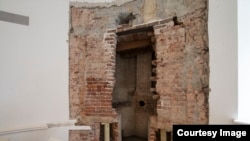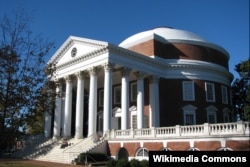An architectural masterpiece designed by the third president of the United States, Thomas Jefferson, is revealing secrets.
During the ongoing renovation of the famed Rotunda at the University of Virginia in Charlottesville, conservators discovered a chemistry laboratory that had been sealed off since the 1850s. It may be the earliest chemistry laboratory in the U.S., researchers said.
The lab was likely built between 1822 and 1826. It was walled off in 1850, a move that allowed it to survive an 1895 fire that nearly destroyed the entire rotunda.
University of Virginia officials said the design of the lab was likely a collaborative process between Jefferson and John Emmet, the first natural history professor at the school.
“For the professor of chemistry, such experiments as require the use of furnaces, cannot be exhibited in his ordinary lecturing room,” Jefferson wrote, according to an article on the UVA website. “We therefore prepare the rooms under the oval rooms of the ground floor of the rotunda for furnaces, stoves etc. These rooms are of 1,000 square feet area each.”
Emmet began teaching at the university in 1825 and used a small room on the north side of the building as his first lab. But the room was too hot, he complained.
“Back then, the different experiments would get different levels of heat from different sources,” said Jody Lahendro, a supervisory historic preservation architect for U.VA’s Facilities Management, in a statement. “For some, they would put the heat source under a layer of sand to more evenly disperse and temper the heat.”
In addition to being cooler, the room was fitted with special flues to allow any toxic fumes to be vented outside.
Still, the lab was likely not the safest place to work by today’s standards. Emmet died relatively young in 1842 at age 47. Some attribute his poor health to “accidents and mishaps” that occurred during experiments.
The university plans to make the lab part of the permanent display when the Rotunda reopens after renovations.













